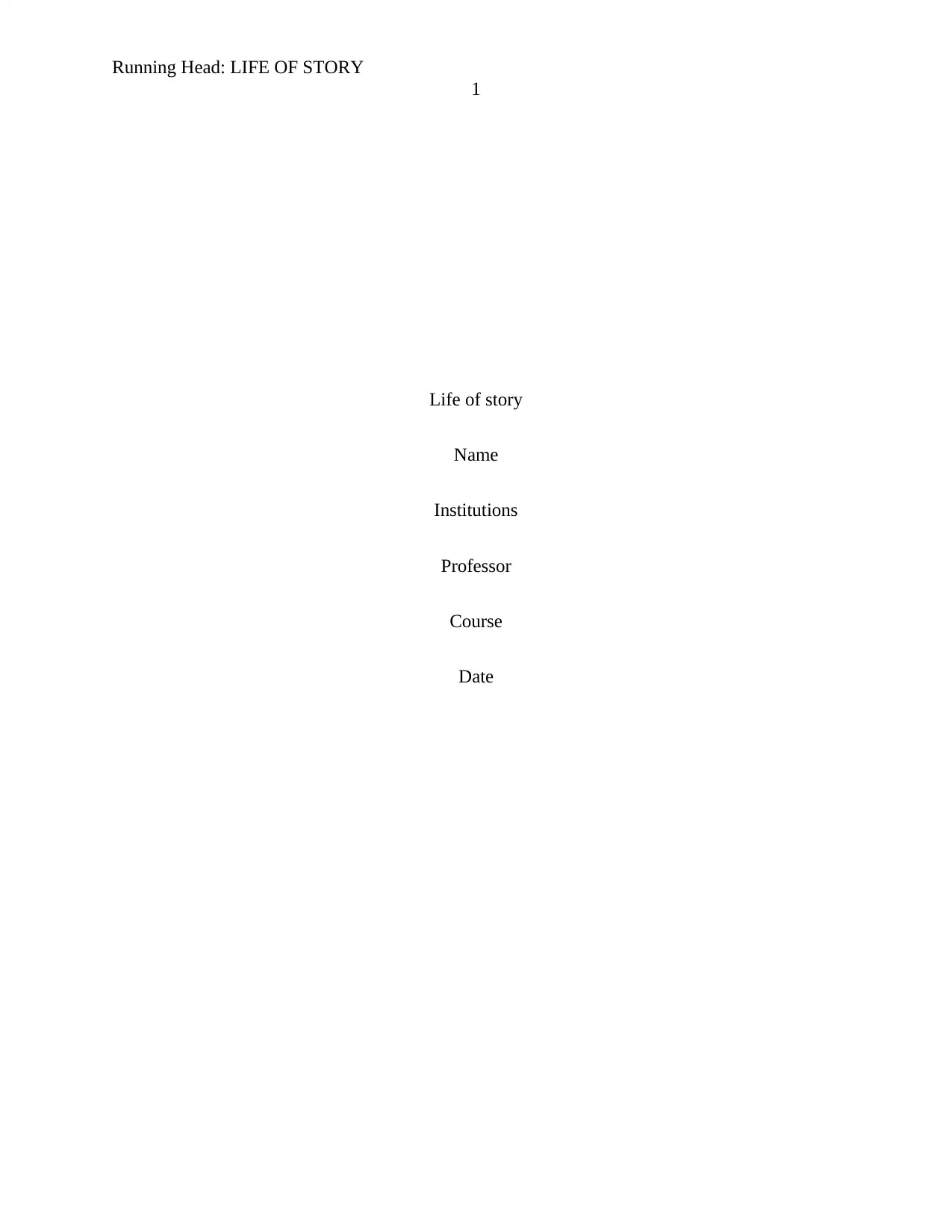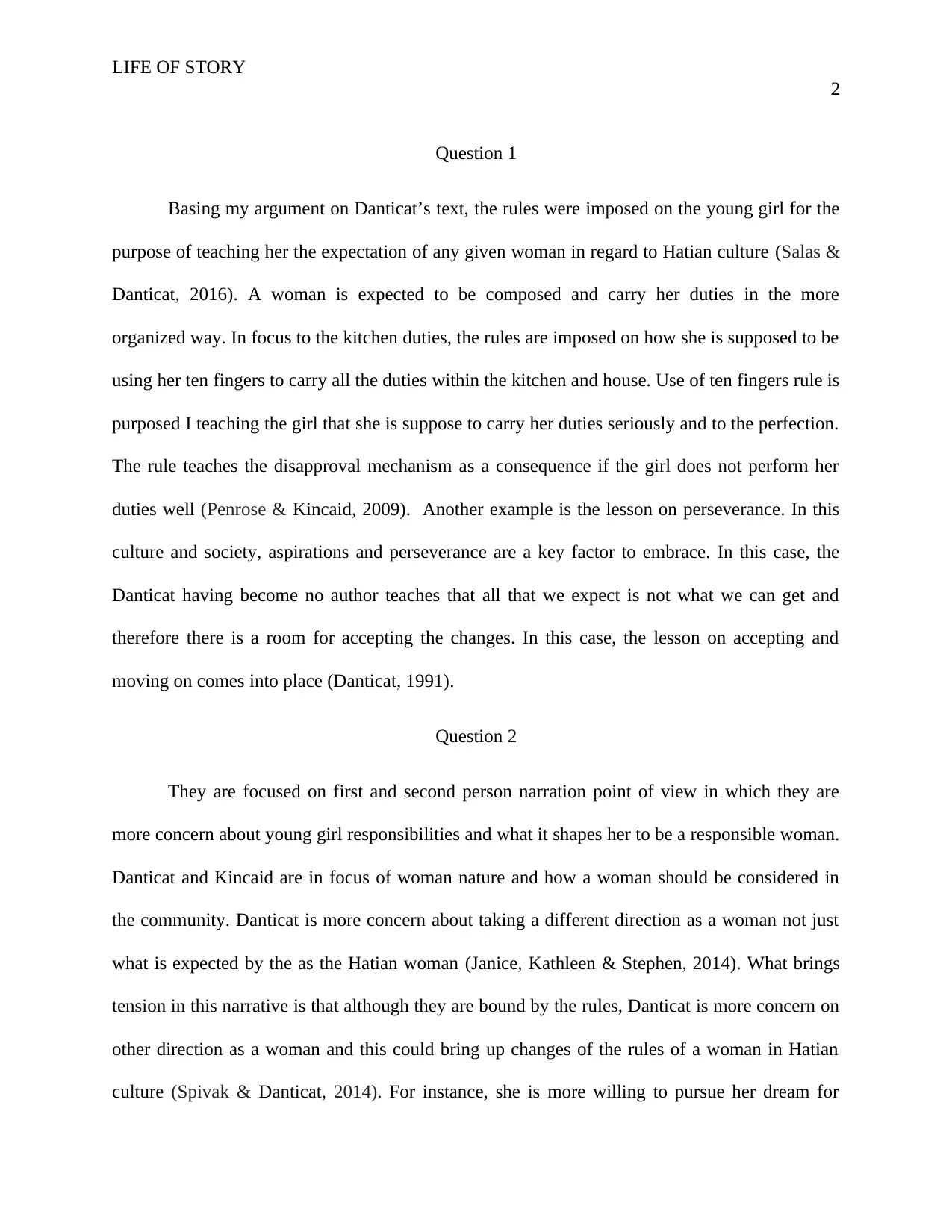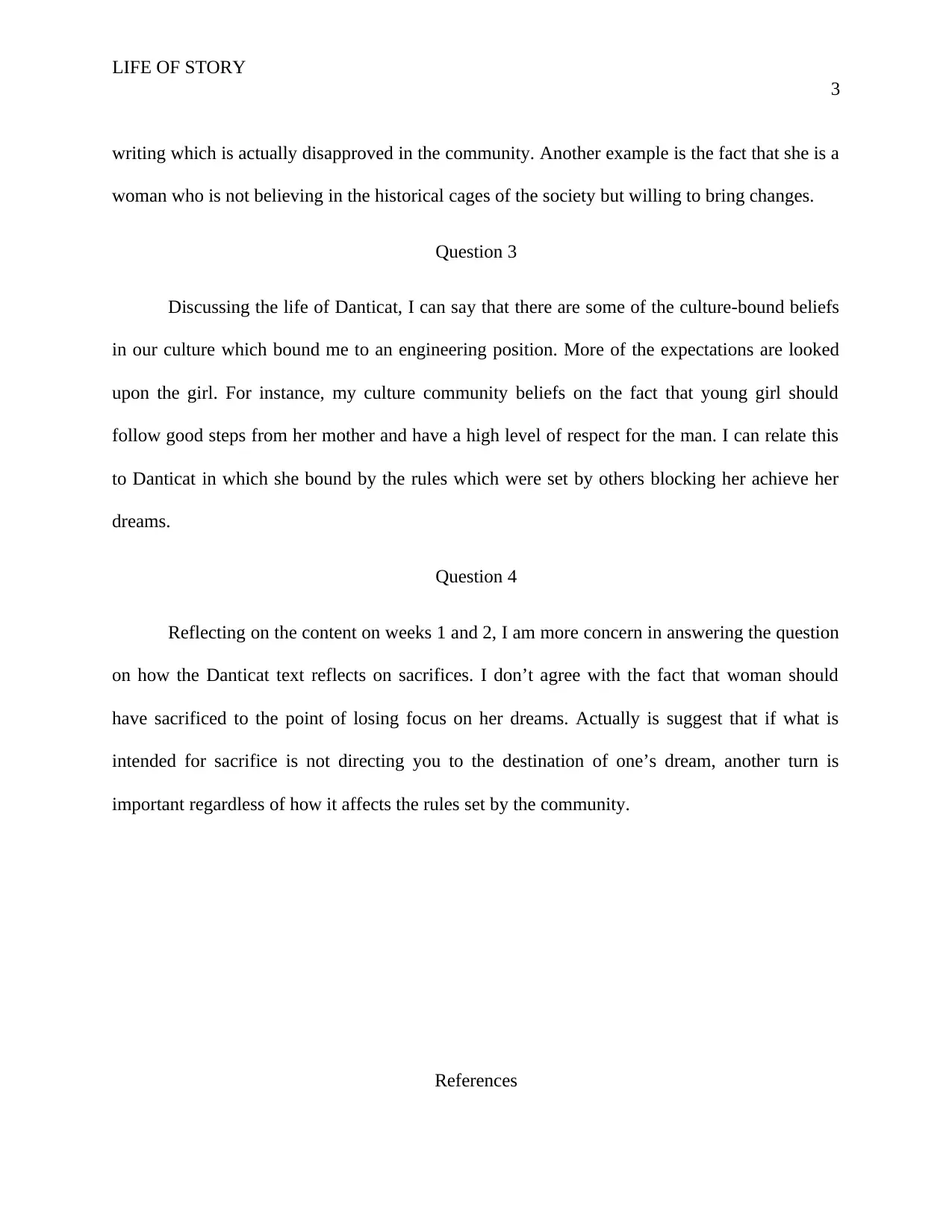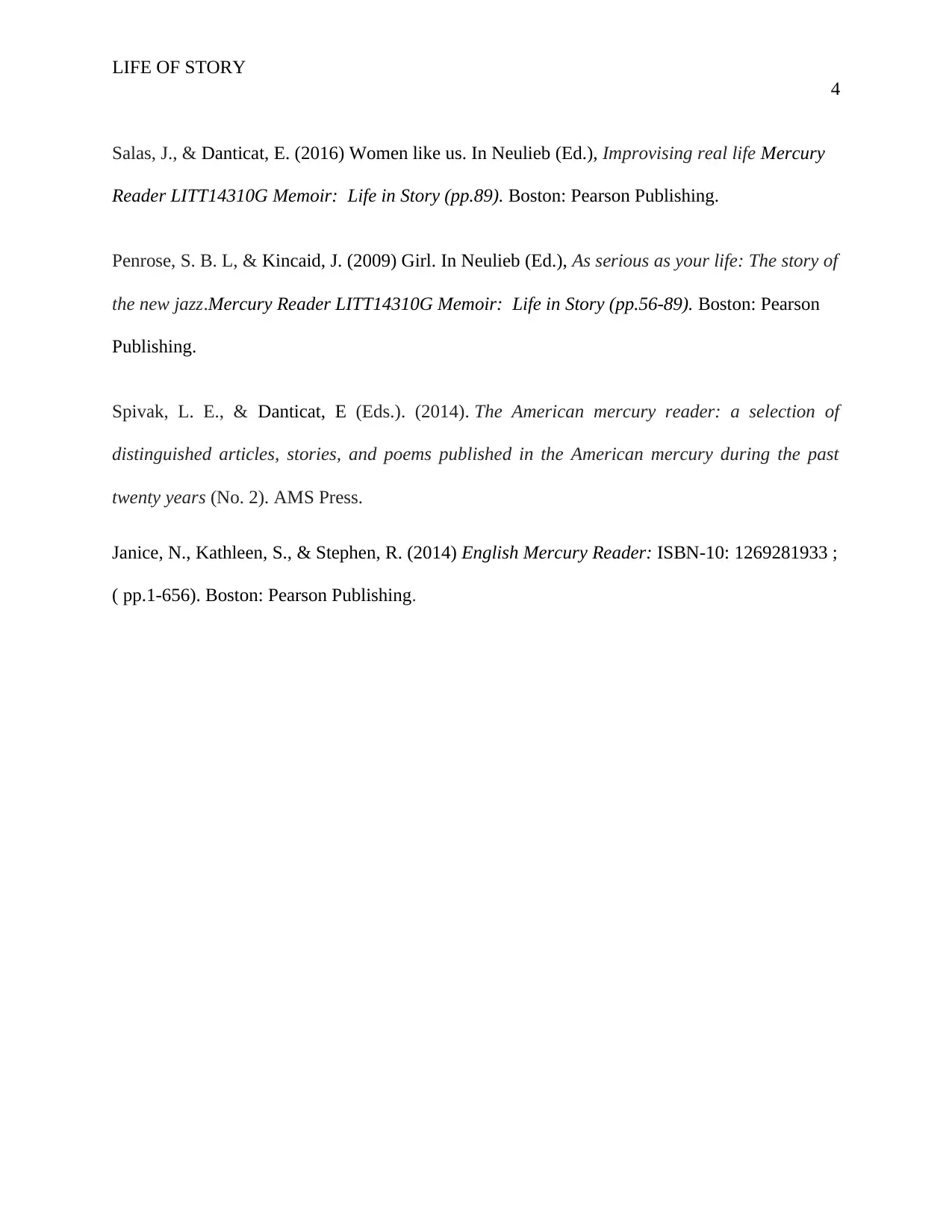Exploring Cultural Identity: An Analysis of Danticat's 'Life in Story'
VerifiedAdded on 2023/06/11
|4
|797
|256
Essay
AI Summary
This essay analyzes Edwidge Danticat's "Life in Story," focusing on the cultural expectations imposed on young girls within Haitian culture. The essay argues that these rules, such as the "ten fingers" rule in the kitchen, aim to instill a sense of duty and perfection. It explores the tension between these expectations and the protagonist's desire to pursue her dreams, particularly writing, which is often disapproved of in the community. The essay also reflects on the theme of sacrifice, questioning whether individuals, especially women, should sacrifice their dreams to conform to cultural norms. The author relates these themes to personal experiences, highlighting the conflict between cultural expectations and individual aspirations. The essay concludes by advocating for the importance of pursuing one's dreams, even if it means challenging established cultural rules. Desklib offers a variety of resources, including past papers and solved assignments, to support students in their studies.
1 out of 4





![[object Object]](/_next/static/media/star-bottom.7253800d.svg)